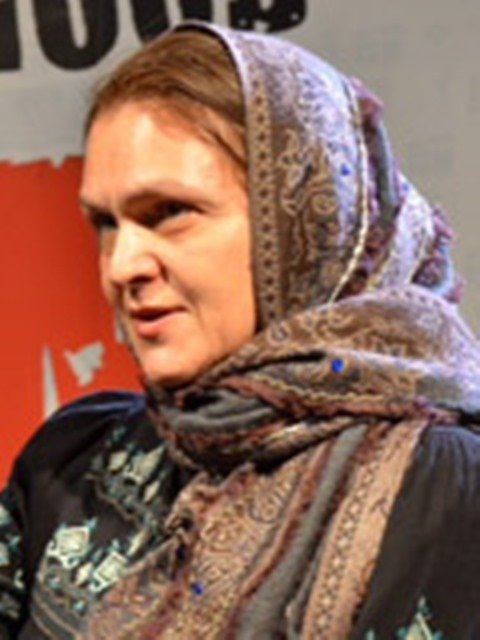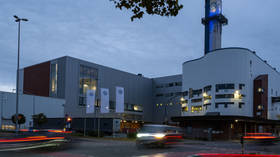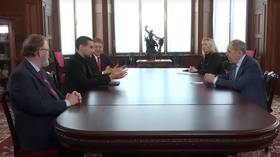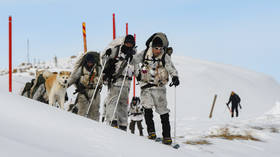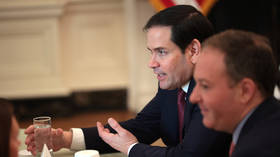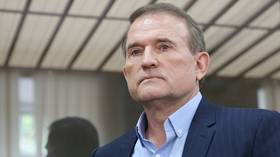Deir Yassin: Where the Palestinian exile began
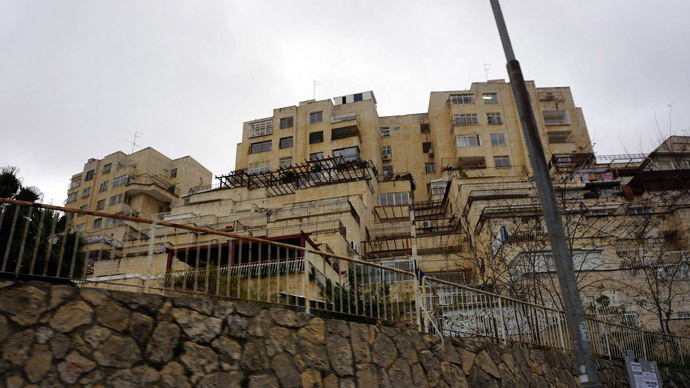
The most famous Palestinian village gained its notoriety 67 years ago. In one day, up to 254 of its residents were killed. Deir Yassin no longer exists – it’s literally been wiped off the map. The Israelis built one of their settlements here.
During the 2006 Lebanon War I was in Beirut, where I met an older Palestinian man, a Canadian citizen, who had traveled to Jordan many times and tried to get into Israel via the checkpoint. His parents were from Deir Yassin. He wanted to visit his home, hoping he would recognize familiar sites. He had been unable to do it at that point.
I wanted to visit, imagining there would be historical remains with signs describing what happened here. Knowing how the Israelis love to mark the geography of their victories, I was sure I would find some sort of memorial. After all, it was here that they were able to make Palestinians leave their homes, clearing the area for new settlers.
But it didn’t really turn out that way.
Every tourist and pilgrim passes former Deir Yassin on their way from the airport to Jerusalem. But tour guides fail to mention the village.
As you approach Jerusalem, you can see on your right hand side a faceless Israeli settlement – like most of them – just some new high-rises.
In the new Israeli geography, this is just another Jerusalem neighborhood called Har Nof. From November 18, 2014, Har Nof is mentioned on all Jerusalem tours. Western tourists and pilgrims are told in detail how Arab terrorists attacked a synagogue and killed four believers, and another one died at the hospital. But all the guides fail to mention the Arabic name for this area.
On April 9, 1948, the little village became a symbol of the Nakba (disaster), which is what the Palestinians call their exile.

The historian Constantine K. Zurayk came up with the term in his book about the exiling of 750,000 Palestinians.
Every year on May 15, Palestinians all over the world remember that day with a moment of silence. Keys to Palestinian homes symbolize the Nakba, as people left their houses, most of which are now in ruins. The key is a symbol of hope and they hope that they will come back. Over 400 Palestinian villages were completely destroyed, and there are no more doors which these keys can open.
Nakba is a forbidden term in Israel; you won’t find it in any textbooks, it is not allowed in public speeches, articles or slogans. School textbooks don’t mention the Nakba, the exile, or Deir Yassin.
The Palestinian people first became refugees in that village.
Which is ironic, because Deir Yassin was a peaceful enclave. The residents had a peace treaty with the neighboring Jewish village. They didn’t participate in the uprising against the occupation, didn’t plan to flee from the new settlers.
But fighters from Zionist paramilitary groups led by Menachem Begin (he was behind the bombing of the King David Hotel in Jerusalem in 1943, leader of the Irgun, Israeli prime minister, and the 1978 Nobel Peace Prize-winner) decided to seize the village.
They entered the village, throwing grenades at the houses and killing the residents. Over 100 people were captured and killed. Up to 254 people, mostly women, children and the elderly, were killed in one day.
The cemetery where the victims were buried no longer exists. Nor does the village itself, with its mosques, schools and houses.
The news of the massacre traveled to all Arab villages. Palestinians are convinced that this unprovoked, spontaneous attack was a scare tactic – a signal to all Arabs to leave their homes so that it would be easier for the Israelis to clear the area. In some way, this plan worked, as about 80 percent of Palestinians became refugees.
They were not allowed to return. Their houses were demolished, and new houses were built in their place – cheap housing for the religious settlers. Here you can find plenty of synagogues and schools. The streets are almost empty, and only the Palestinians from the West Bank are busy constructing new houses for the settlers.

Now there’s not a single Palestinian living in Deir Yassin. Some old buildings are visible from the road that goes along the slopes of the hills. Those buildings have different owners now.
For an hour-and-a-half we drive around Deir Yassin to find at least some trace of Palestinian presence. On the tallest hill among the trees several old buildings can be seen, their design bearing no resemblance to the new Israeli buildings. No signs, no memorial plaques.
Down the hill there are recently-built schools for the children of the settlers.
I get out of the car and start taking pictures. I have permission and accreditation to do so.
Having noticed that I’m taking pictures with children in them, the security guard of the school runs towards me under the rain and demands I show him my ID.
He’s 37, married, no children. He shows me his gun. He’s a settler, and a religions one, wears payot and a kippah. A white shirt with signs of his service is pulled over his clothes. He doesn’t react to the rain at all. He scrutinizes my documents and refuses to lead me inside a room or a building.
“I can’t do that, but we can talk under a tree.”
The tree doesn’t provide sufficient cover. My notebook is getting wet, and so is my camera. The security guard gives me my press card back.
“So you’re from Russia? My great-grandparents are from there as well. They moved to the US, and I was born here.”
He starts talking about his education, about sports he did. He’s willing to answer my questions.
“You’re here because of the murders, aren’t you?” he asks.
“Yes. Why are you checking my documents?”
“I was suspicious that Arabs were here photographing something.”
Apparently, he reacted not so much to my camera as to the car, having seen through the car window in the pouring rain that the driver is a Palestinian.
“I’m not an Arab,” I say.

“It wasn’t clear. And then in the evening we’d get some lies in a YouTube video,” he counters.
“I was taking pictures of the old houses.”
“It all happened at the synagogue down there, not here.”
“Was there a synagogue at the time?” I ask.
“Of course, those two terrorists killed so many people just recently.”
“I was actually going to ask about what happened in 1948,” I tell him.
“I see...” he responds.
He is disappointed that I don’t want to talk about the recent incident. But he changes gears quickly and starts with Mark Twain traveling to the Holy Land in the 19th century.
“There was an American writer called Mark Twain.”
“I know. I read his works when I was in school.”
“Have you read his impressions on traveling around Israel?”
“I have, but that was later. I think he called it the Holy Land, but he was an atheist and didn’t like it here very much.”
The fact that I’m familiar with Twain’s work doesn’t stop him. He thinks I’ve misunderstood it or paid attention to the wrong things.
“Mark Twain says that it was a completely deserted place. There were some people living in towns, but other than that it was empty. The Arabs are lying when they say they were living here. They generally lie a lot.”
“At the time there weren’t so many people in general,” I say.
“According to Mark Twain, only 15,000 people lived here.”
I think I misheard.

“Does Mark Twain mention Deir Yassin? I don’t recall. Here, in this place? Much fewer. Or do you mean that 15,000 Jews were living in Palestine at the time?” I ask.
“No, 15,000 in total – Arabs, Jews, Christians, all of them on this whole territory. Twenty thousand maximum.”
No point in arguing, it’s better just to listen. I get the impression that there is some kind of predetermined set of phrases that every Israeli falls back on, with variations that have to do with how pious the individual in question is and his country of origin.
He retells Twain’s stories in his own way again. These notes seem to have become the cornerstone of a never-ending dialogue with Palestinians. However if you bring up records by Russian pilgrims who had visited the Holy Land since 11th century and described it in detail, the Israelis believe this is yet another anti-Semitic trick made up by Russian Orthodox anti-Semites. For some reason they believe this is what all Russian Orthodox believers are like. So they invent stories of some monks traveling here and finding a lot of kind-hearted Arabs.
It’s best not to interrupt.
The security guard suddenly jumps to the times of Herod.
“We’ve discovered a lot of evidence and archeological findings of Jews that lived here and of their lifestyle. We also found many coins.”
For those unaware of the issue and its details, the story invented for foreigners has an unfortunate mishap. There are no recognized archeological traces of Jews that lived here prior to Herod, no matter how hard Israeli archeologists search for them. They would occasionally find a vessel with a Jewish name on it, which then proved to be a fake.
He brings up the father of Zionism, Theodor Herzl, and then turns to violence of Arabs against Jews prior to the creation of the Israeli state.
“Let’s talk of the 1948 events,” he says.

He begins explaining that all Arab countries were trying to destroy the young Israeli state just three years after Holocaust. Then he jumps to describing the feat of the Israeli Army, which captured the entire Sinai in just three days, and was very close to taking Cairo as well.
“So what happened here in this village in 1948?” I ask.
“It was plain and simple. People who used to live here, in this village and in the neighboring ones, were well-armed. They would often attack the Jews living in Jerusalem. At some point, two Israeli squads decided to launch a counterstrike. They approached the village and opened fire at it. Arabs insist that 500 women and children were killed there; but Jews are merciful people; they wouldn’t kill out of anger like Arabs did when they attacked the synagogue and shot those men.”
“In Deir Yassin, 254 women, unarmed elderly, and children were killed,” I say.
“No, that’s a lie, 50 people at the most were killed. There couldn’t have been that many residents in this tiny village,” he declares.
A huge settlement for many thousands grew in the place of the former “tiny village.” It occupies quite a large area, which means the Palestinian village definitely wasn’t that small either, especially considering that its men were causing so much trouble for Jerusalem.
“You have to understand that people die during war. They hide behind civilians. The issue was settled through attacking the village. It was nobody’s intent to kill those women and children; but they didn’t realize that one day they’d have to pay for the actions of their men. Most Arabs simply fled, and avoided being killed.”
Then he goes back to the victorious Israeli army.
“And where are the homes of Arabs?” I enquire.
“There aren’t any here. All of these houses were built later. They just abandoned their homes, and fled.”

However there are some Palestinian buildings that are fenced and unapproachable, one of them, a mental institution. Some other buildings can be seen from the main road. Several houses have also remained from the neighboring villages – mainly on hills where the settlements haven’t built their sections yet.
There isn’t a single Palestinian in Deir Yassin, neither is this name present on the map. Most Arabic names have been replaced with Jewish ones. This is the way things are done.
“Are people here aware of the 1948 massacre?” I ask the guard.
“I’ve just told you how it all happened. It wasn’t a massacre, but rather a response to aggression. They realized it and they left.”
Our conversation is going in circles. The schoolkids are leaving for home after classes. As we stand talking near the school building where the man I’m talking to works, children are driven away in cars. No one goes off on foot alone.
I take pictures of the institution for mentally-challenged people. There are no Arabs among its patients. Scarce passers-by are mainly Orthodox Jews, rabbis in black hats, with special caps looking very much like shower caps on top. They ignore questions and go away as unhurriedly as they approached me. Sometimes they make signs of protest against being photographed, but more often they just pay no attention. Multistory buildings are encircled by several lines of fences, equipped with a sophisticated system of locks and codes.
Entering small street stores, you mostly see Orthodox Jews at the counter. They don’t wish to converse either.
We are circling the streets in search of Arab dwellings. It was really hard to identify them from the highway and almost impossible to find. And those people we meet don’t want to answer questions about Deir Yassin.
The only people who readily agree to talk to us are Palestinian workers from the construction site nearby. They come from the West Bank to work here on a rotational basis. All have work permits and cling to their jobs as the Palestinian Authority can’t offer them any alternative. All of them are called ‘Mohammed’ here, fearing that if they reveal their true names, they will have problems and lose their permits and jobs.
They also heard about a couple of remaining Palestinian households, but had never gone to see them. Their daily route is from home to work and from work back home, or rather a rented apartment. From time to time they make a break and go home.

If a Palestinian man is seen wandering aimlessly around the settlement, it’s deemed suspicious. Just like me and my team.
When people were killed at the local synagogue, most of them went away and lost their jobs. They were substituted with other unemployed in no time – there is no lack of labor supply and lots of people to choose from. Those who are selected, undergo a thorough background check – their ancestors can’t be born somewhere around here.
Palestinians of Deir Yassin origin are banned from coming here, even if they reside abroad – they are just not allowed into Israel.
The synagogue where villagers were killed in November 2014 is part of the vast city center area. As I walk around taking photos, a guard comes by and, obligingly, shows me where the bodies of the victims and the killers lay.
They were two Palestinians – 22-year-old Rassan Abu Jamal and his 27-year-old cousin Uday Abu Jamal from Jabel Mukaber, an Arab neighborhood in southern East Jerusalem. According to various sources, they worked either at a local shop or a café. They attacked people entering the synagogue armed simply with kitchen knives. They were shot dead immediately.
They are deemed heroes in their native village, where all the fences are covered in posters displaying their faces. In late December 2014, their bodies were handed over to the relatives for burial, an unprecedented occurrence. The family house where the cousins lived wasn’t pulled down by bulldozers, despite the court ruling and common practice established in Israel. And the murder reports don’t mention the name of the village – Deir Yassin.
This is what the modern history of the Holy Land’s geography is like – the land where two nations are kept hostage to something that is beyond human capacity.
The statements, views and opinions expressed in this column are solely those of the author and do not necessarily represent those of RT.
The statements, views and opinions expressed in this column are solely those of the author and do not necessarily represent those of RT.
